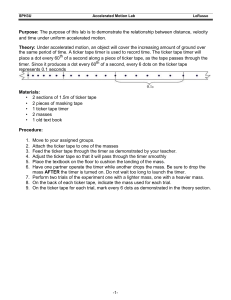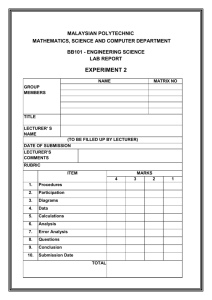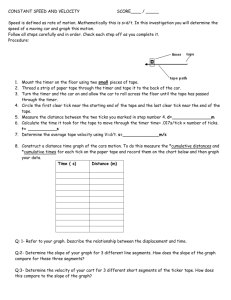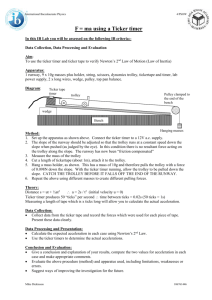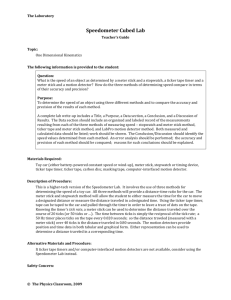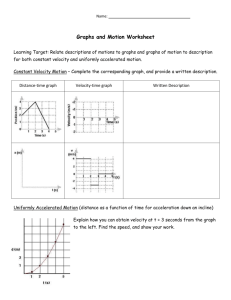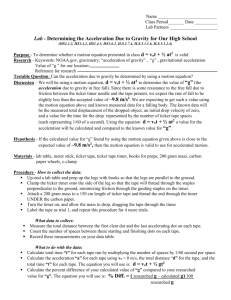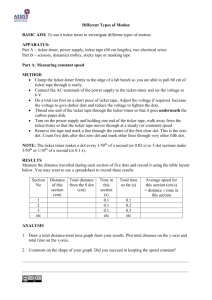Accelerated Motion Lab
advertisement
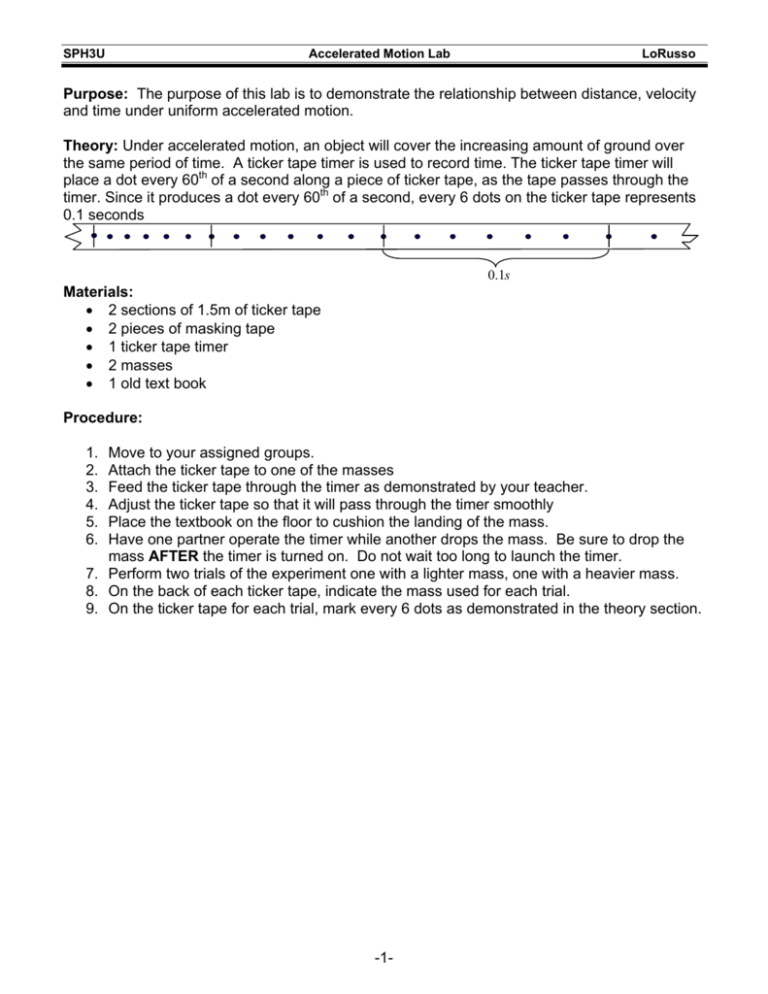
SPH3U Accelerated Motion Lab LoRusso Purpose: The purpose of this lab is to demonstrate the relationship between distance, velocity and time under uniform accelerated motion. Theory: Under accelerated motion, an object will cover the increasing amount of ground over the same period of time. A ticker tape timer is used to record time. The ticker tape timer will place a dot every 60th of a second along a piece of ticker tape, as the tape passes through the timer. Since it produces a dot every 60th of a second, every 6 dots on the ticker tape represents 0.1 seconds 0.1s Materials: • 2 sections of 1.5m of ticker tape • 2 pieces of masking tape • 1 ticker tape timer • 2 masses • 1 old text book Procedure: 1. 2. 3. 4. 5. 6. Move to your assigned groups. Attach the ticker tape to one of the masses Feed the ticker tape through the timer as demonstrated by your teacher. Adjust the ticker tape so that it will pass through the timer smoothly Place the textbook on the floor to cushion the landing of the mass. Have one partner operate the timer while another drops the mass. Be sure to drop the mass AFTER the timer is turned on. Do not wait too long to launch the timer. 7. Perform two trials of the experiment one with a lighter mass, one with a heavier mass. 8. On the back of each ticker tape, indicate the mass used for each trial. 9. On the ticker tape for each trial, mark every 6 dots as demonstrated in the theory section. -1- SPH3U Accelerated Motion Lab LoRusso Observations: d 3 = 7.1cm d 2 = 3.2cm d1 = 1.2cm t1 = 0.1s t 2 = 0.2 s t (s) Trial 1 d (cm) Δt Δd v (Δd ÷ Δt ) t 3 = 0.3s t centre t (s) (= t + 0.05) -2- Trial 2 d (cm) Δt Δd v (Δd ÷ Δt ) t centre (= t + 0.05) SPH3U Accelerated Motion Lab Calculations: Displacement vs. Time: 1. On two separate graphs, plot d v.s.t for both ticker tapes. (Use the cumulative d and t , not the Δd . Note: a) Graphs are to be done in pencil. b) The labels may be done in pen but MUST BE underlined in red d (cm) c) Use the full scale of the graph d) Plot each point in pencil and draw a small circle around each point. e) Draw a “curve” of best fit between the points, DO NOT PLAY CONNECT THE DOTS. LoRusso d v.s.t t(s) Velocity vs. Time: 2. On two separate graphs, plot v vs. t centre for both ticker tapes. Note: t centre is the time during the interval where that velocity actually occurs. 3. On the line of best fit of your v vs. t centre , find two convenient points to calculate the slope. Find the slope of the line of best fit (include the units in your calculations). rise slope = run v2 Δy = rise Δx v1 y − y1 run = 2 x2 − x1 t1 t2 Questions: 1. What do you notice about the spacing of the dots? 2. Why do you think we use a line of best fit on the graphs? 3. Compare the shape of the displacement vs. time graphs to the velocity vs. time graphs. What do you notice? 4. What do you notice about value of the slope of the two velocity vs. time graphs 5. What does the Δy of the slope represent? 6. What does the Δx of the slope represent? 7. By looking at the units of the slope, what does the slope itself represent? 8. Derive a formula for accelerated motion using the slope formula. 9. Calculate the area beneath the velocity vs. time graphs between the initial and the final times. Compare these results to your total displacement for each graph. What do you notice? -3- curve of best fit
